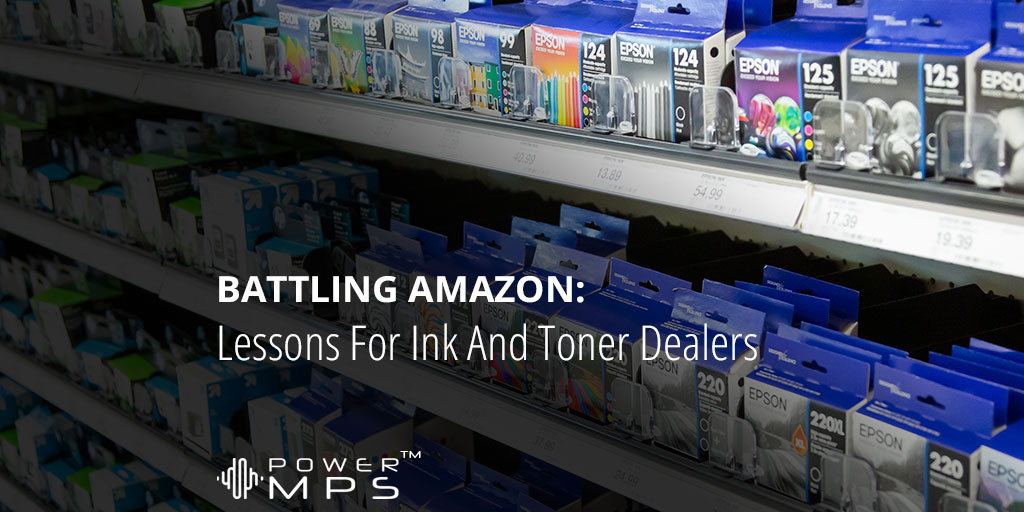While eCommerce sales have slowly been rising for more than a decade, online sales saw a significant boost in 2020. Consumers and even businesses spent 44% more online than they did in 2019. And, despite widespread office closures, office supplies such as ink, toner, storage, and mailing and shipping materials suffered much less than projected, but it’s not what you might think!
 Overall, office supplies recorded $12.6 billion in sales last year, down only 0.3% from 2019. However, the drop was recorded mainly for in-person office supply retailers as regulations closed down stores, and buyers were encouraged to avoid unnecessary excursions outside the home. The result was an influx of eCommerce sales for office supplies to help support not only a few individuals still frequenting the principal place of business but the additional home offices now required for companies to continue operation.
Overall, office supplies recorded $12.6 billion in sales last year, down only 0.3% from 2019. However, the drop was recorded mainly for in-person office supply retailers as regulations closed down stores, and buyers were encouraged to avoid unnecessary excursions outside the home. The result was an influx of eCommerce sales for office supplies to help support not only a few individuals still frequenting the principal place of business but the additional home offices now required for companies to continue operation.
But it wasn’t just home and remote offices boosting online sales. A nation pushed into pseudo-homeschooling produced an unprecedented increase in demand for art, coloring, craft, and, of course, ink and toner supplies. The need for workplace materials was so great it was often referred to as one of the “new essentials” alongside toiletries and lumber. Office supply eCommerce saw gains of up to 35% year-over-year.
But the revenues were by no means doled out equally, so ink and toner dealers who have not invested in an online strategy have been impacted greatly.
“The Big Box” Competition
When Walmart first entered the retail market in 1962, Sam Walton’s dream was to change retail. The following decades saw the “big box” giant overtake communities throughout the United States. Their dominating strategy? Win on price. Cutting costs on goods by even a few cents across the board pulled customers away from local grocers and Mom-and-Pop that lacked the negotiating power of the more significant retailer. Building on this initiative, the company set the stage for providing a wide range of products from pharmacy, home, toys, and tires to even grocery.
But, while Walmart was a pioneer in the brick-and-mortar space, Amazon is the force majeure of online sales. From the humble beginnings of a standard suburban garage to a worldwide name, Jeff Bezos has built Amazon into the eCommerce equivalent of a “big box” retail store, except he did it online.
The Amazon Of Today
In 2021, Amazon has ranked as number one on the top 10 retail eCommerce companies yet again. Over the past year, they have amassed over 40% of total eCommerce sales, sitting at a whopping $367.19 billion. Despite its continued efforts to disrupt Amazon’s lead, even the brick-and-mortar giant Walmart trails far behind in the number two slot with a mere 7.1% of the eCommerce pie.
Perhaps not too surprising, given the website’s initial purpose as a purveyor of books and other media, Amazon still receives most of its sales through books, music, and video. However, the company’s strategy has been to gradually introduce new categories to its marketplace as it sees the opportunity. In addition to holding over 80% of all US eCommerce in their primary category, Amazon also accounts for over 50% of the US’s computer and consumer electronics online market.
Other recent additions to Amazon’s usual disruption strategy include the “prime wardrobe,” which allows consumers to “try before you buy,” and Amazon Pharmacy. But these recent forays should not overshadow continued efforts by the corporation to expand its hold in other areas. This effort is most notable for toys and hobbies, of which they currently hold 46% of total US sales and office supplies (45.6%).
How Ink And Toner Dealers Can Win In eCommerce
Brick-and-mortar stores had to learn how to compete and survive against Walmart for survival. To do so, they had to understand that competing on price alone would put them out of business. Instead, they had to differentiate themselves and help their customers understand what made them a better choice than the “big box” retailer – and worth the price. Ink and toner dealers have been dealing with this impact for some time.
Today restaurants, grocery, clothing, and home goods stores find what they have that Walmart lacks and flaunt it to gain success. Many stores have found success by cultivating a political or religious ideology. Others focus on customer service, guarantees, or dedication to the environment. Where is the niche for Ink and toner dealers in this realm?
Walmart and Amazon Killing Price Play for Dealers
Amazon might dominate the eCommerce space, but there is still plenty of pie to go around. This is especially true for office supplies, where global demand is expected to rise by $38.6 billion over the next six years. Computer, copier, and printer supplies alone are projected to capture a market share of 29.9% in the US. The trick to grabbing a slice of that printer and ink space is the same as when retail was fighting brick-and-mortar behemoths – find a way to take advantage of their weaknesses.
For ink and toner dealers it has to be going outside of supplies alone and offering value-based services and combining it with business and e-commerce automation, resulting in deeper solutions for your customers.
Solutions Are Available
Using an all-in-one mps platform that combines eCommerce, managed print services tools, and business automation like those included in PowerMPS, can help you leverage those benefits when it matters most – while eCommerce is still beginning to take hold of the copier, printer, and ink office supply space. While Amazon works hard to expand categories and gouge prices, eCommerce solutions like PowerMPS that combine everything needed to offer deep value, helps print and ink specialists create customized interactive tools for current and future clients. With this system, customers can monitor their ink levels; receive tailored notifications; easily create and modify subscriptions; and request service, maintenance, or troubleshooting for printer and IT needs, and incorporate automation solutions that make it more effective.
The Office Supply Marketing Outlook
Market outlook for the US and global office supply market space has not only survived a pandemic; the market is set to grow significantly as companies continue to re-invent the central/remote/home office dynamic. But this new take on office functionality will likely only speed up the move toward greater eCommerce reliance. Astute ink, toner, and print companies aren’t looking to join the race to the bottom bid. Instead, they are making plans to take advantage of tools that will help them differentiate their business, provide more convenience, and allow them to grow beyond the walls of their physical location and spread their wings wide into the eCommerce space.







